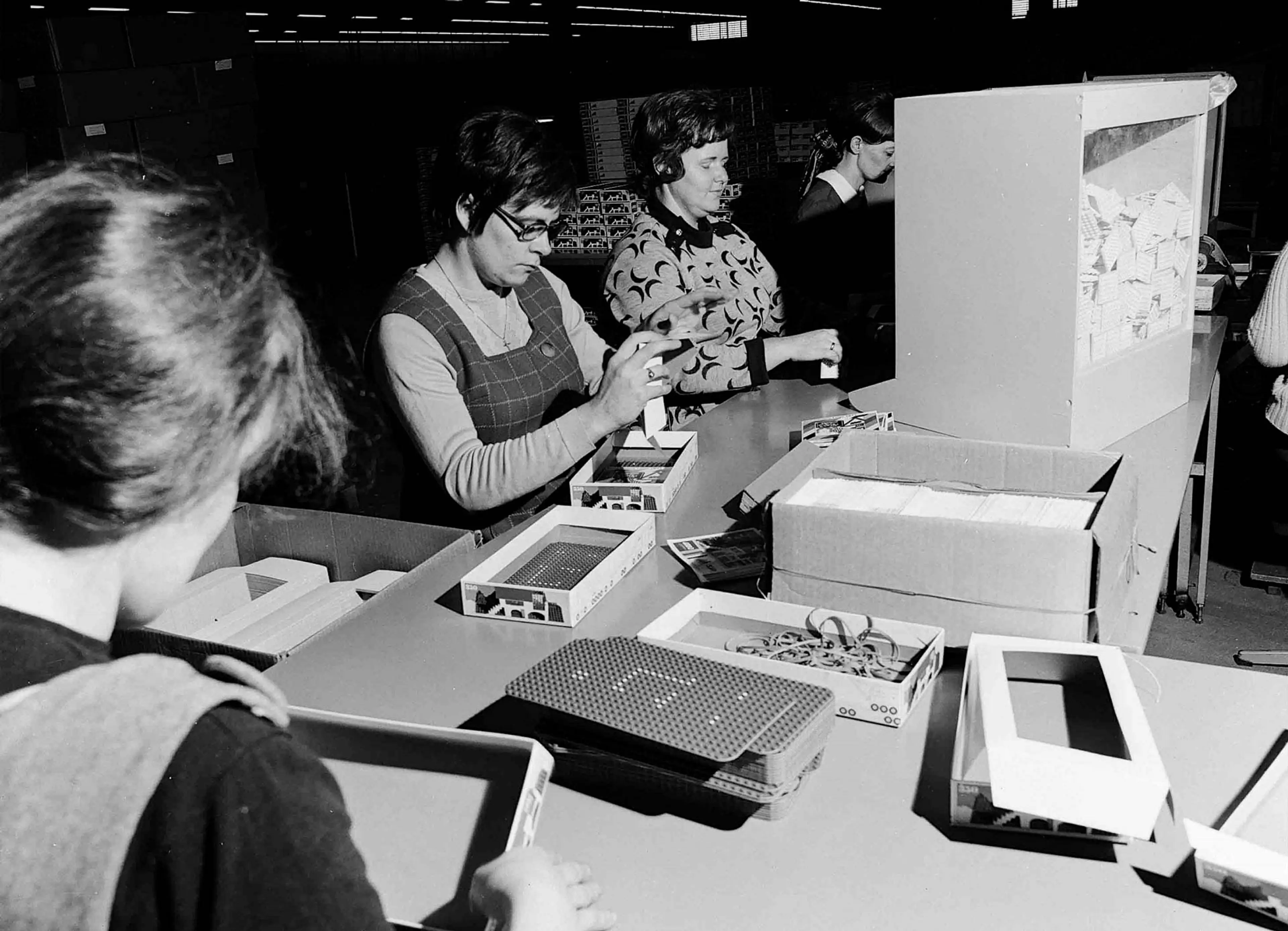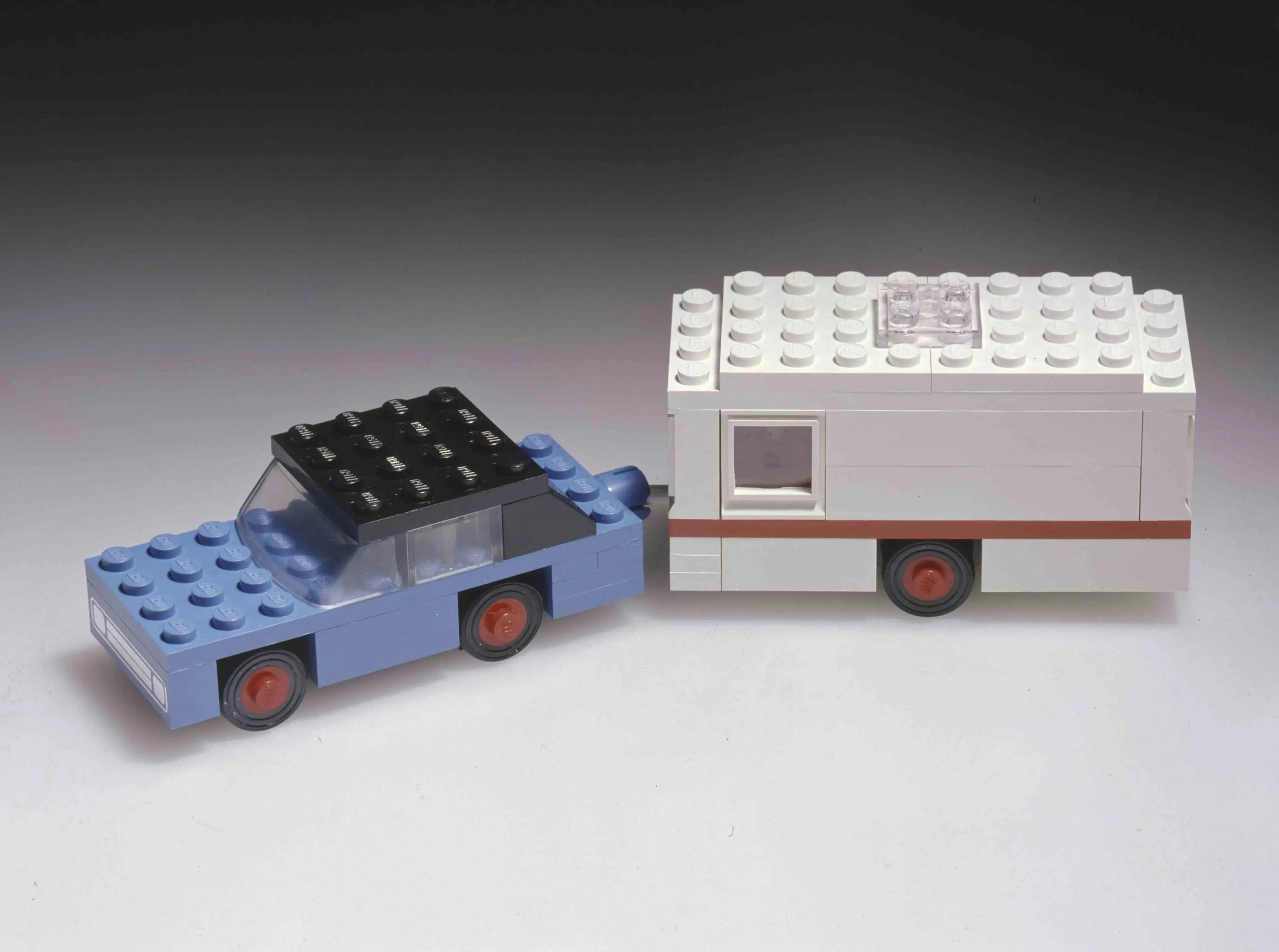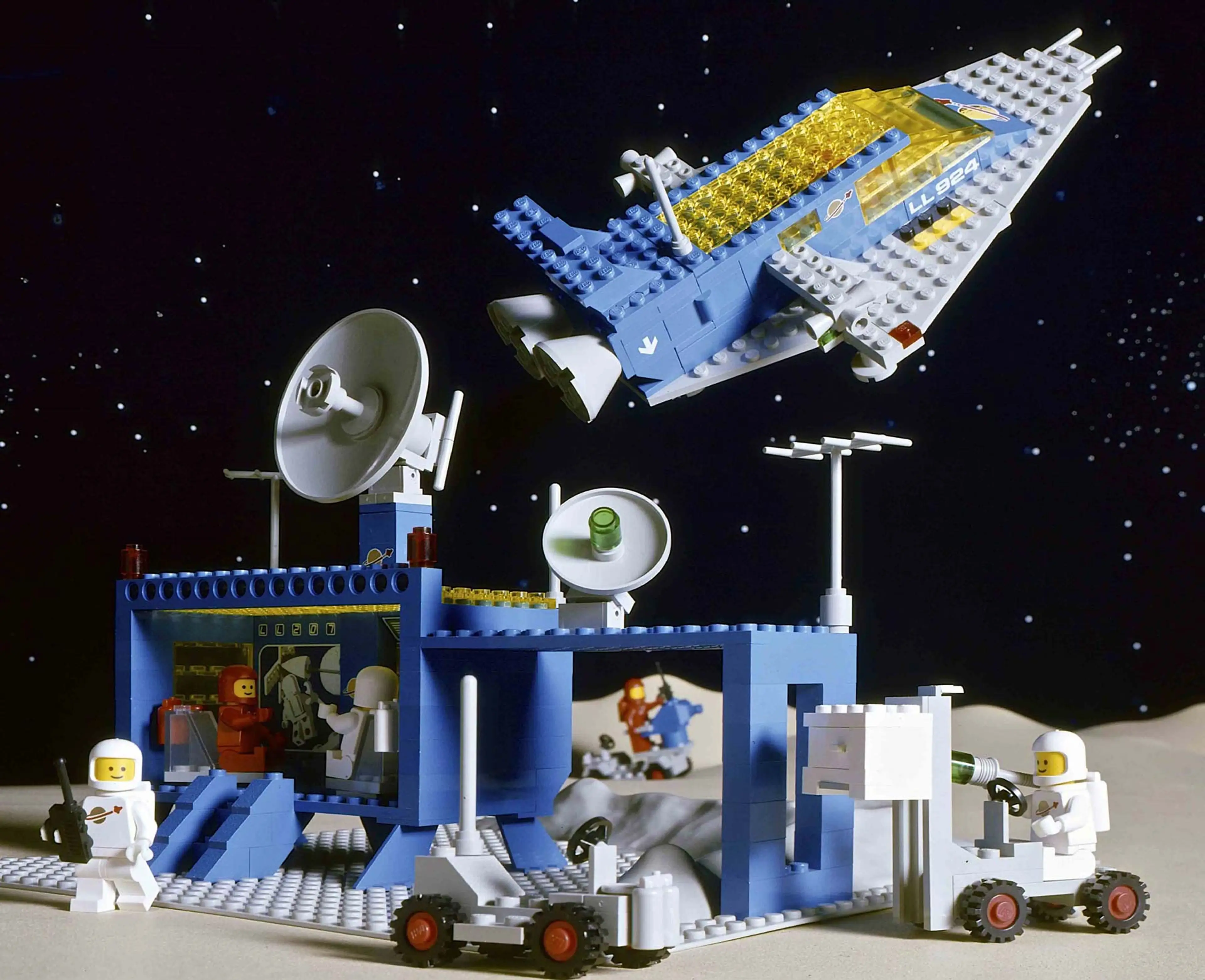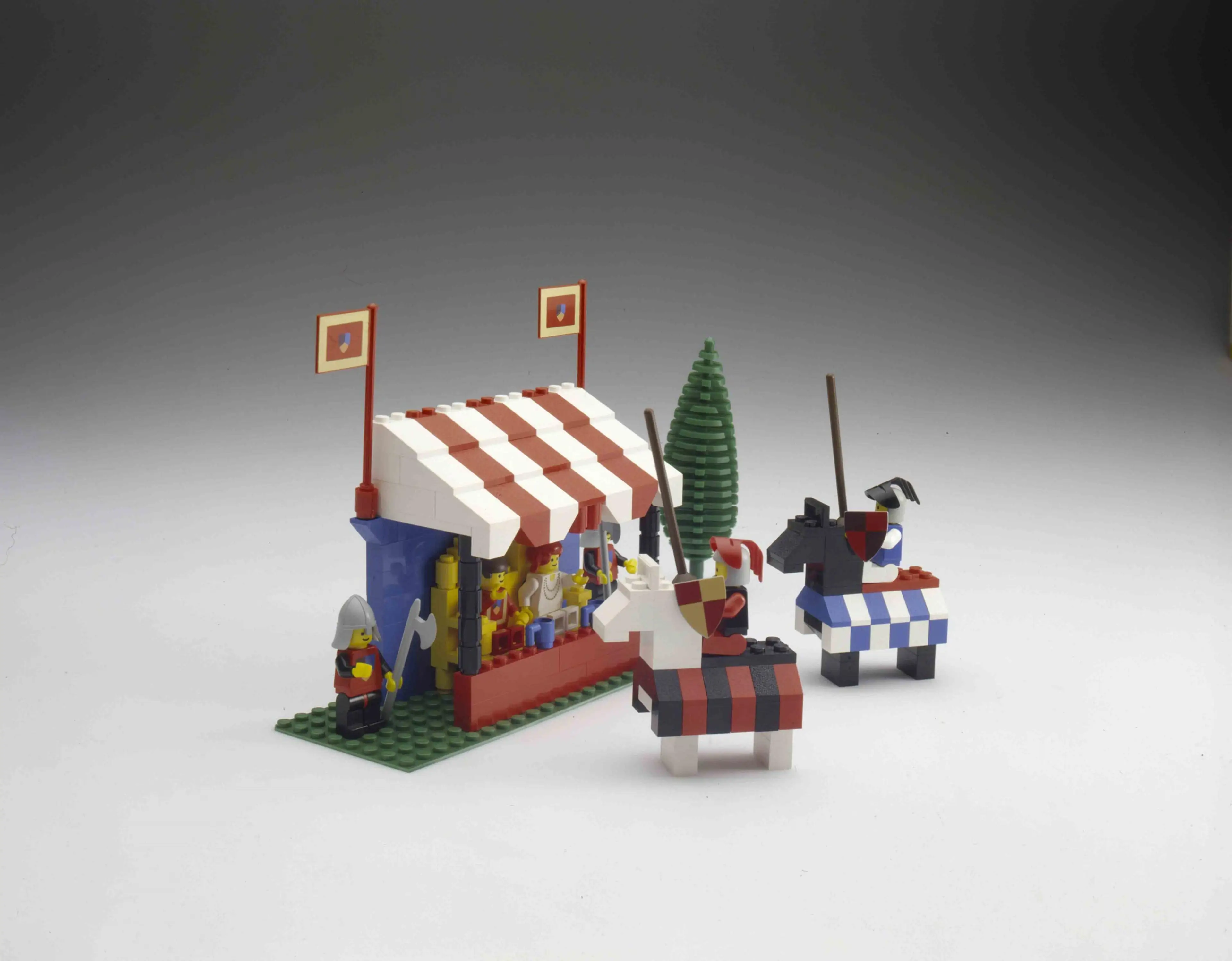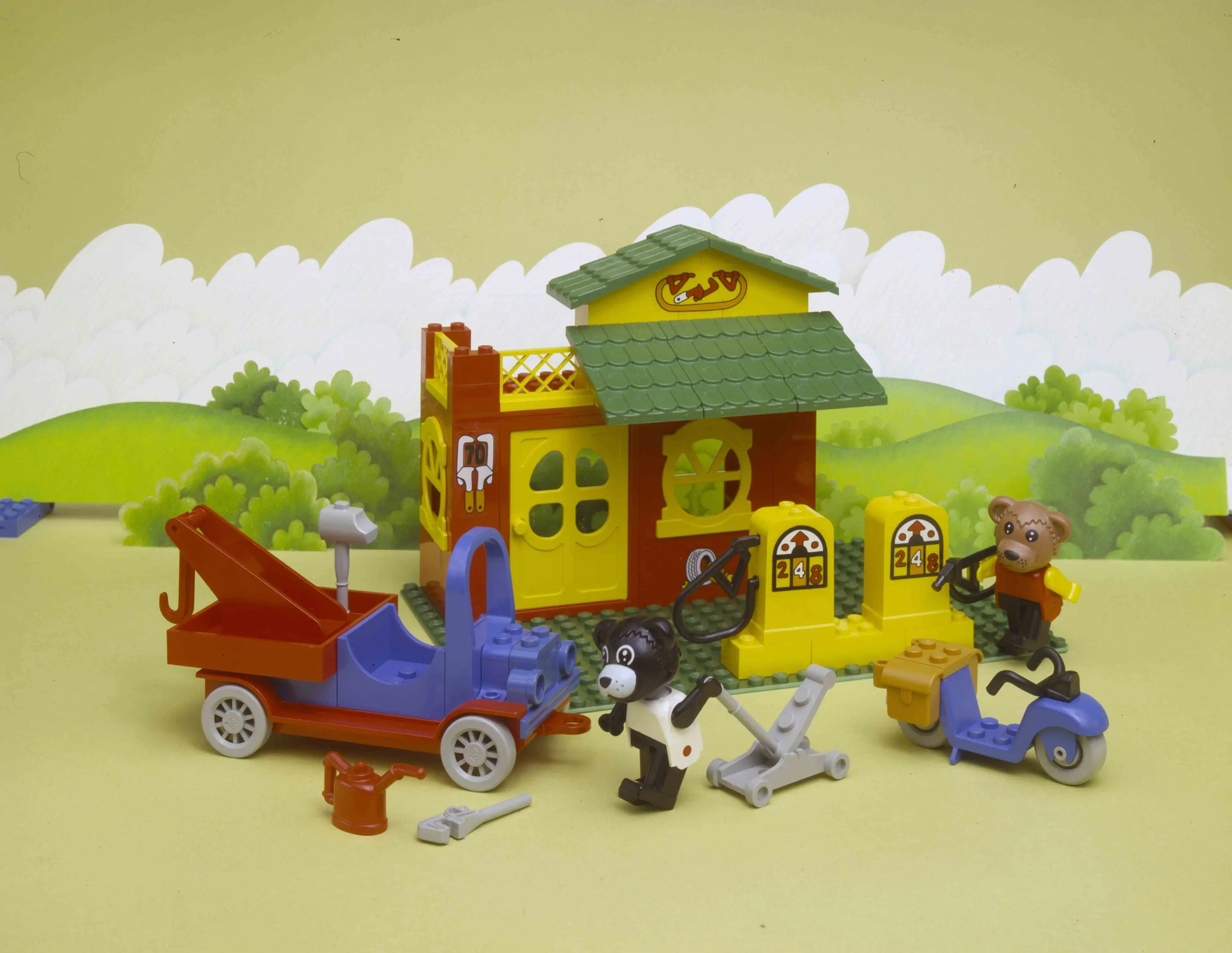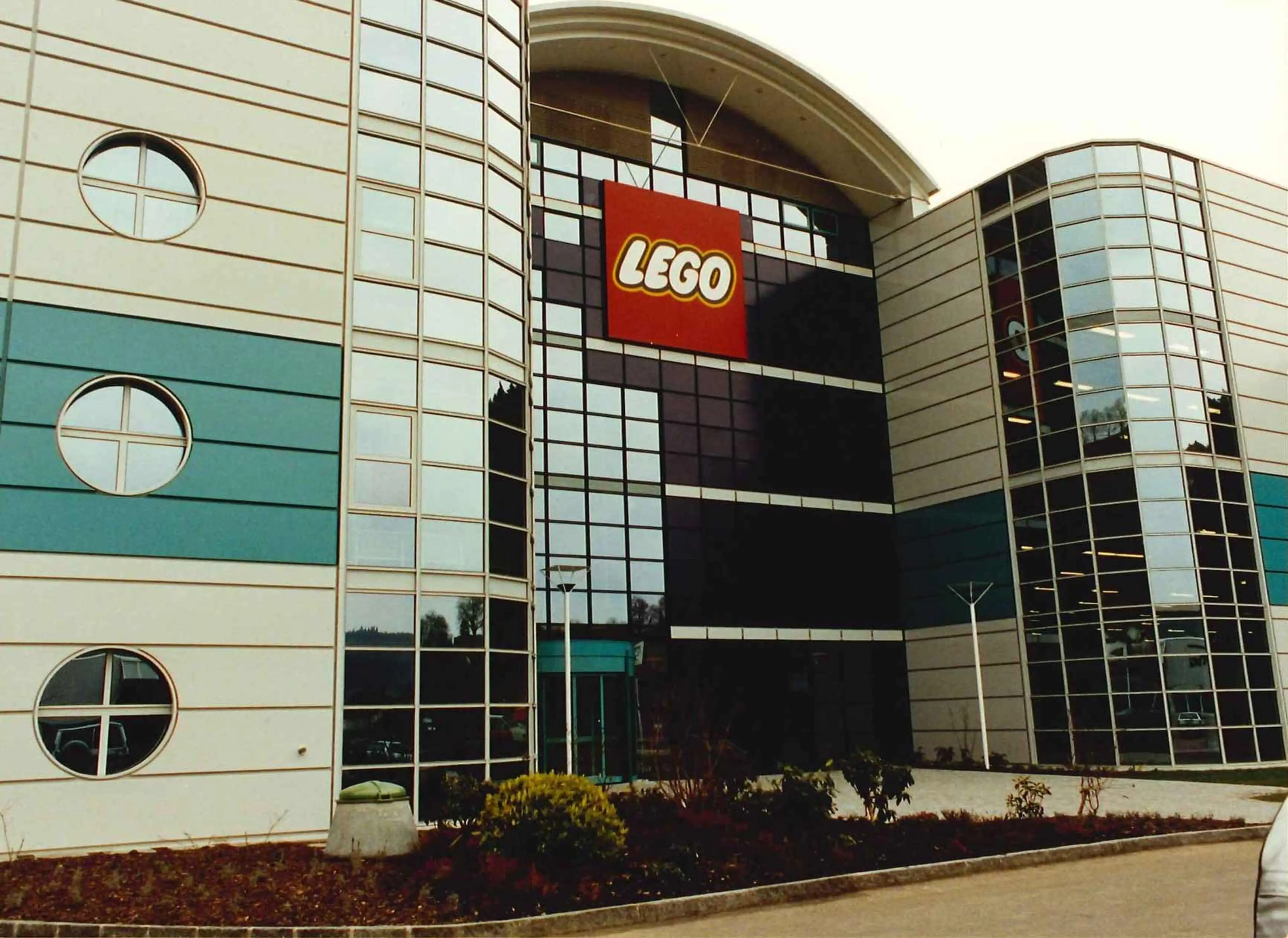In 1978, LEGO owner Kjeld Kirk Kristiansen introduces a new business model: the “System within the System”. With the new model the LEGO Group starts to further differentiate its various products and for the first time introduces LEGO® play themes as we know them today. One of the initial three play themes is LEGOLAND® Space. The earliest space sets with spaceships, lunar bases, rockets and rovers are clearly inspired by the real space technology of the 1960s and 1970s. The sets are a leap forward in LEGO design with new elements such as transparent yellow windows, radar dishes and antennas. The theme becomes well-known for its gray and blue color scheme, colorful LEGO minifigure astronauts and an iconic logo of a spaceship circling a moon.
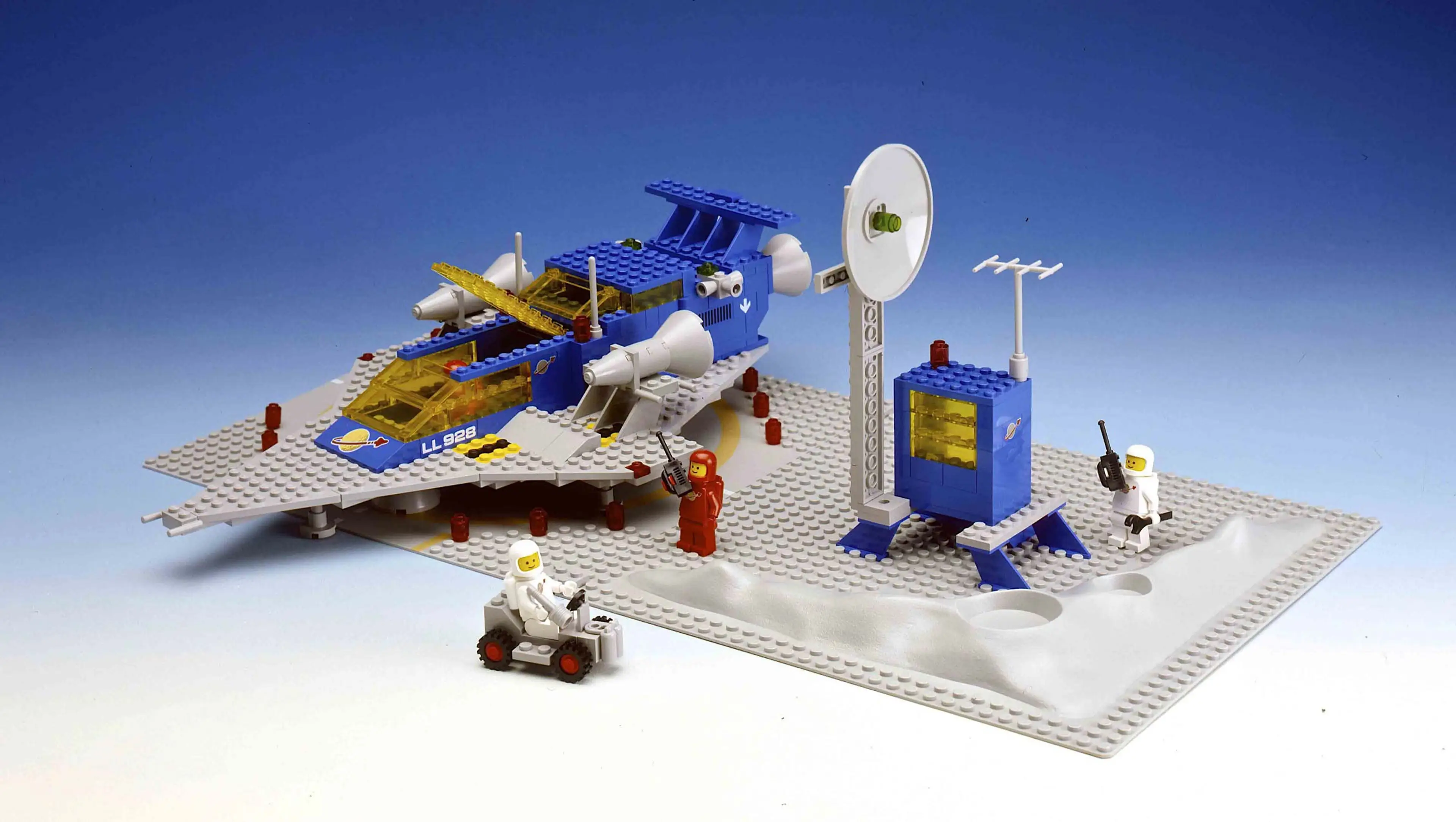
One of the iconic LEGO® Space sets. Set no. 928, from 1979
LEGO astronauts
The LEGO Group launches the LEGO minifigure in 1978, and thus the minifigure naturally is a part of the LEGOLAND Space theme launched that same year. The minifigure astronauts in the classic space sets explore the galaxy with smiles on their faces and wear space suits, visor-less helmets and air tanks. The first space suit colors are red and white followed by yellow, blue and black in later sets. Designer Jens Nygaard Knudsen explains:
It was difficult at the time to make bricks in new colors or to make new elements. The helmet had to work in space, castle and town for example
Thus, the astronauts in Space sets wear the same helmets as LEGOLAND Town Policemen or LEGOLAND Castle knights.
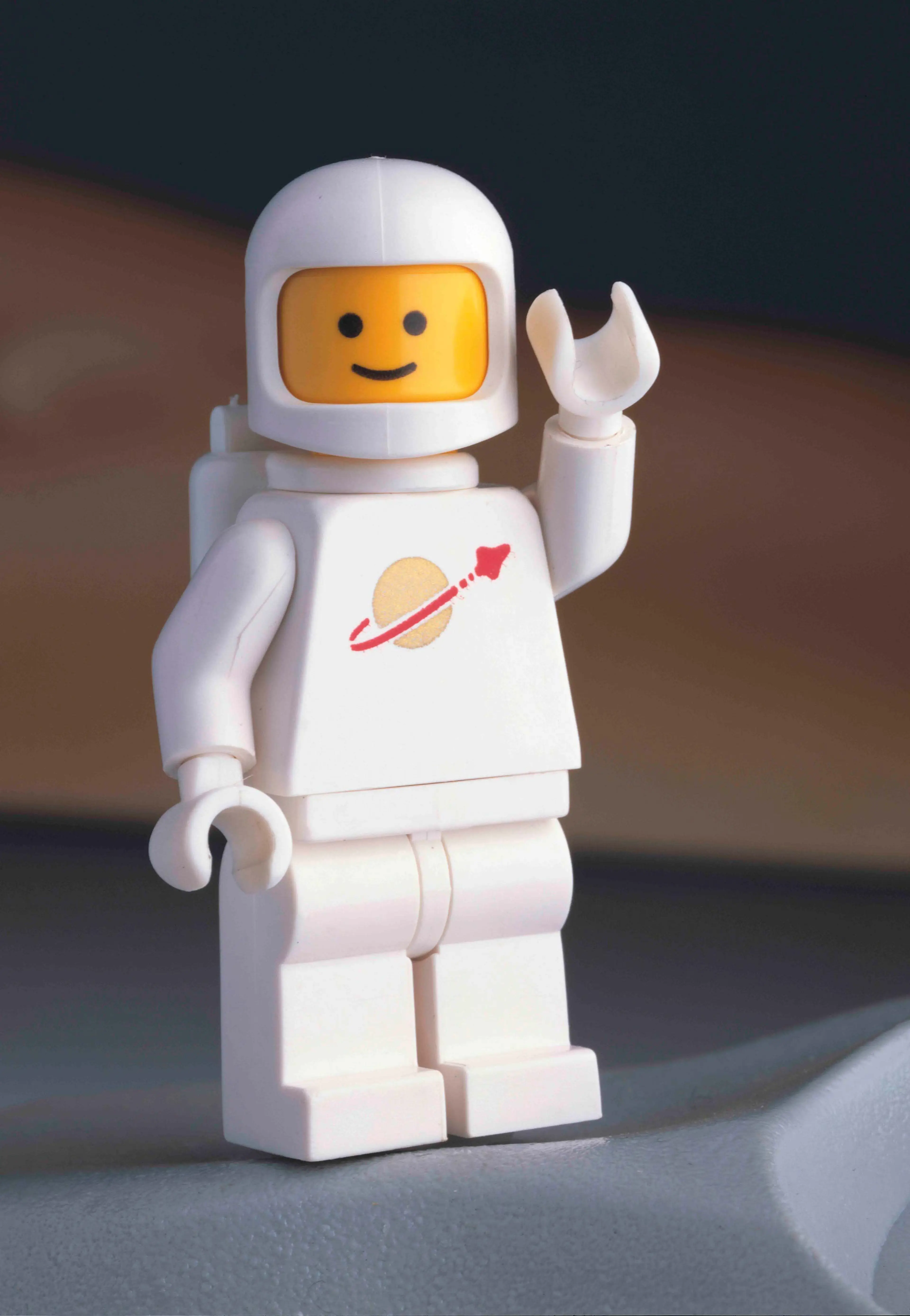
One of the original LEGO® Space minifigures from 1978
Science fiction designs
With the release of the sub-series LEGO Blacktron and LEGO Futuron in 1987 science fiction designs are introduced with unique ground-buggies, walking robots, small and large spaceships, and bases. Futuron partly uses the same color scheme of the previous Space sets. The black spaceships of Blacktron with yellow trims and red and yellow transparent elements feature a more stylish, sleek and intimidating design in comparison to earlier Space sets. The large spacecraft ‘Renegade’ from Blacktron features modular interchangeability, which becomes a staple of future Space sets. Interchangeability means the LEGO model can be split into a number of smaller modules enabling a recombination into new modules just as they can be combined with modules from other space sets.
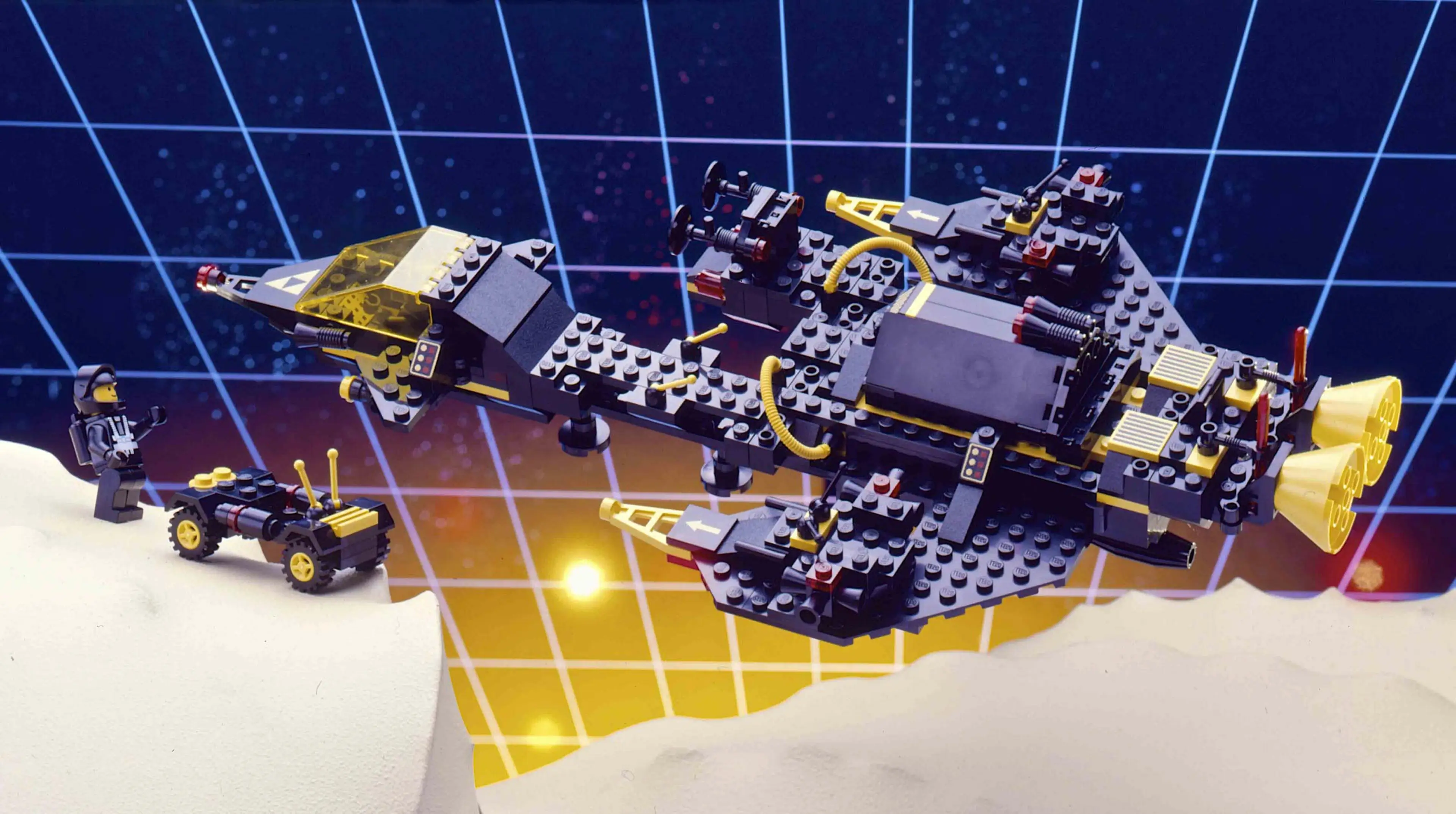
‘Renegade’ from Blacktron, set no. 6954, 1987
Space rivalries
LEGO minifigures in Blacktron wear black jumpsuits akin to military pilots with white trims and opaque black visors. They are the first group of bad guys into LEGOLAND Space rivaling the Futuron good guys. At the time the LEGO Group does not want violent conflicts in the sets, and designers of LEGOLAND Space sets are not allowed to add weapons to the models. Instead they add studs or other round pieces to the models as fantasy weapons. Designer Jens Nygaard Knudsen explains:
We were not allowed to make weapons, and the aerials and other elements that pointed forwards on the spaceships looked too aggressive. Instead we added a lot of radar dishes and sensor probes, but to us they were really guns!
Today the LEGO Group recognizes that conflict between good and evil often forms an important part of children’s play as it teaches children about their own – and other people’s – aggression. It helps children to recognize and handle disputes in other situations. However, the LEGO Group has no intention of glorifying war or encouraging violence, and therefore refuses to produce realistic weapons and military equipment with the risk of children recognizing these types of weapons from hostilities around the world. Instead, the LEGO Group supports children, stimulating their imagination by launching only historical and fantasy weapons. With the aim of toning down the conflict element, a good dose of humor is incorporated in the models and the storytelling around the play themes.
The police arrive
LEGO Space Police is launched in 1989 to defend Futuron from the villains of Blacktron. Space Police introduces a series of brave individuals whose spacecrafts are black and blue with red transparent windows. The Space Police models are also interchangeable with modular systems enabling one to recombine modules from one model into new models just as they can be combined with modules from other Space sets. They return in 1992 with a second series and again in 2009.
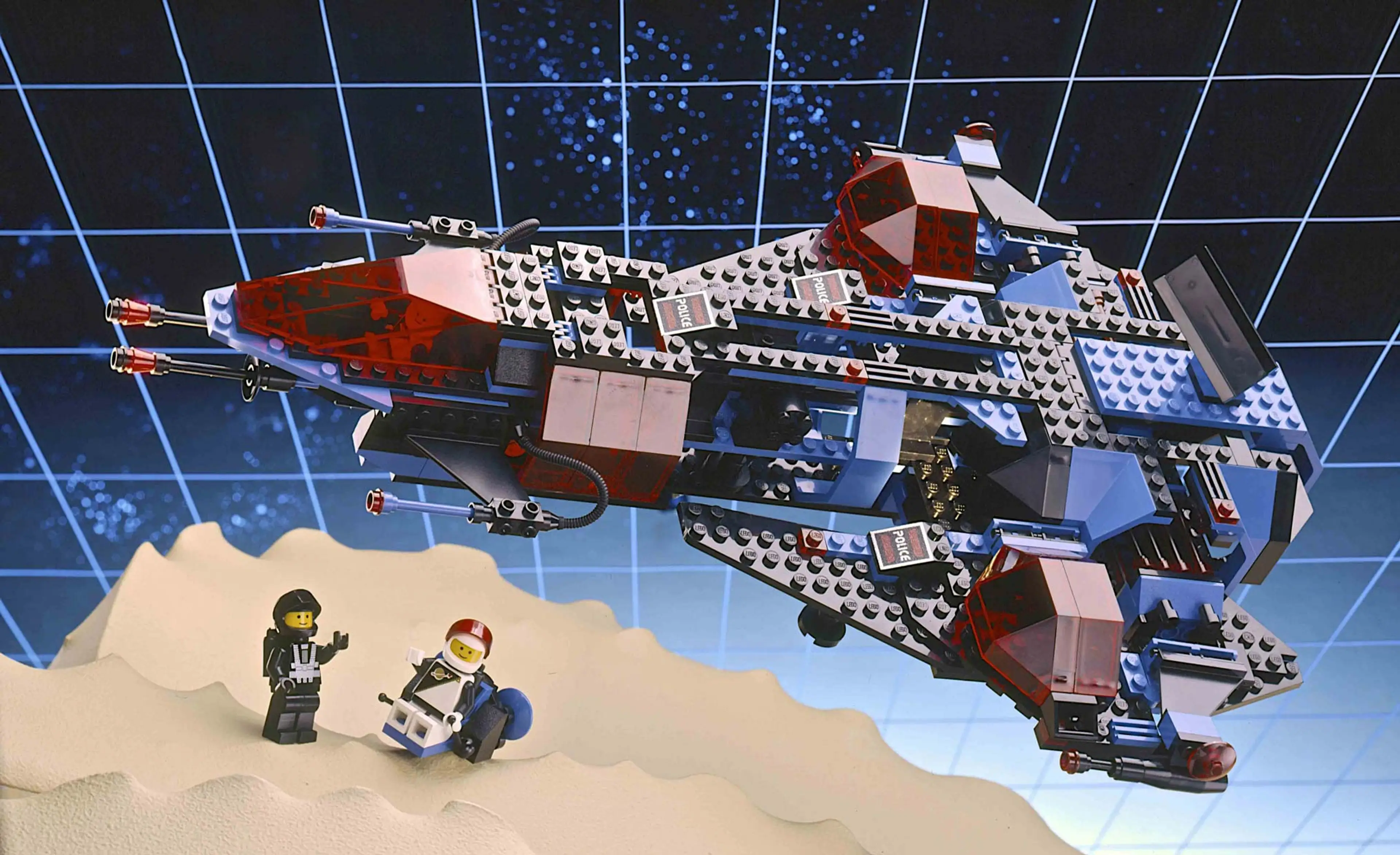
Set no 6986 was one of the Space police sets launched in 1989
Magnets in space
The next Space theme, LEGO M:Tron, is introduced in 1990. The red, black and trans-neon green vehicles of M:Tron incorporates magnetic pieces to attach and transport small vehicles and containers. M:Tron takes over the role as civilians in space facing off against updated enemies in the shape of the second generation Blacktron introduced in 1991. M:Tron is the last Space theme to carry the ‘LEGOLAND’ name on the boxes. Like the other LEGO play themes, the LEGO system name replaces the ‘LEGOLAND’ name.
New good versus evil constellations
In the 1990s the Space theme is introduced in many sub-themes with new good and bad constellations including, but not limited to, LEGO Ice Planet 2002 in 1993, LEGO Spyrius in 1994 and LEGO Exploriens in 1996. In 1997, the first Space theme to feature aliens is launched with LEGO UFO. In the theme, many of the spaceships use saucers or half-saucers as elements to provide new effects such as curvatures. Crewed by cyber-detailed minifigures and their robotic droid assistants, the LEGO Insectoids in 1998 are a fleet of alien spacecrafts and ground vehicles resembling giant Earthly insects and arachnids. The theme utilizes new elements designed to look like insect components, particularly legs and wings.
Mars adventures
At the end of the 1990s the LEGO Group enters a licensing agreement with Lucas Film to produce LEGO Star WarsTM, and the development of new Space sub-themes slows to a crawl. However, during the 2000s there is a growing curiosity about Mars and whether or not life can exist on the Red Planet. The LEGO Group launches LEGO Life on Mars in 2001 featuring human explorers on the planet as well as the friendly Martian civilization they encounter. In 2007 explorers return in LEGO Mars Mission to a red planet with a hostile alien armada.
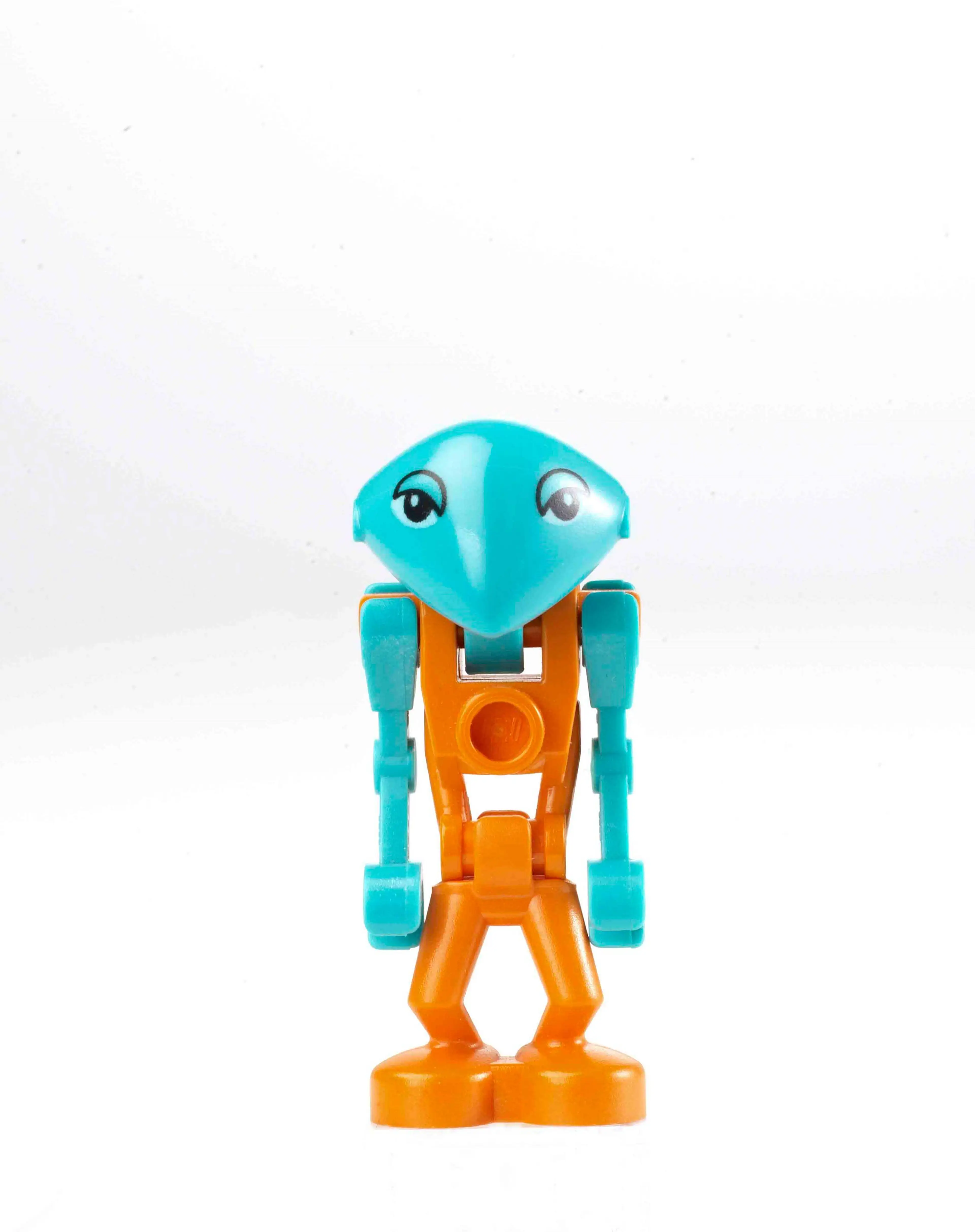
A Martian from the LEGO® Life on Mars theme, set no. 7316
Back to reality
Space is also seen in other LEGO play themes with sets inspired by real space technology. In 1995, the LEGO Town theme launches authentic based space vehicles followed by LEGO Space Port in 1999. In 1996 LEGO Technic Space Shuttle, set no. 8480 is launched. The model features a fiber optic system used to light up the engines. Gears and motors power the bay doors, the robot arm and the satellite. The arm can turn and bend and the satellite solar panels can open and close. In 2003 a licensed Discovery Channel theme launches around famous spaceflight missions. After a pause the LEGO Group launches a new space shuttle in 2010 intended for older builders but it quickly becomes popular with children of all ages. Thus the LEGO Group in 2011 launches a redesigned more robust model of the shuttle with more play features added for younger children. Following the success of the Shuttle the LEGO Group launches a new subtheme in 2011 called LEGO City Space with sets being co-designed by NASA Education. Focus in the sets are on play features more than the accurate models from the Discovery theme.
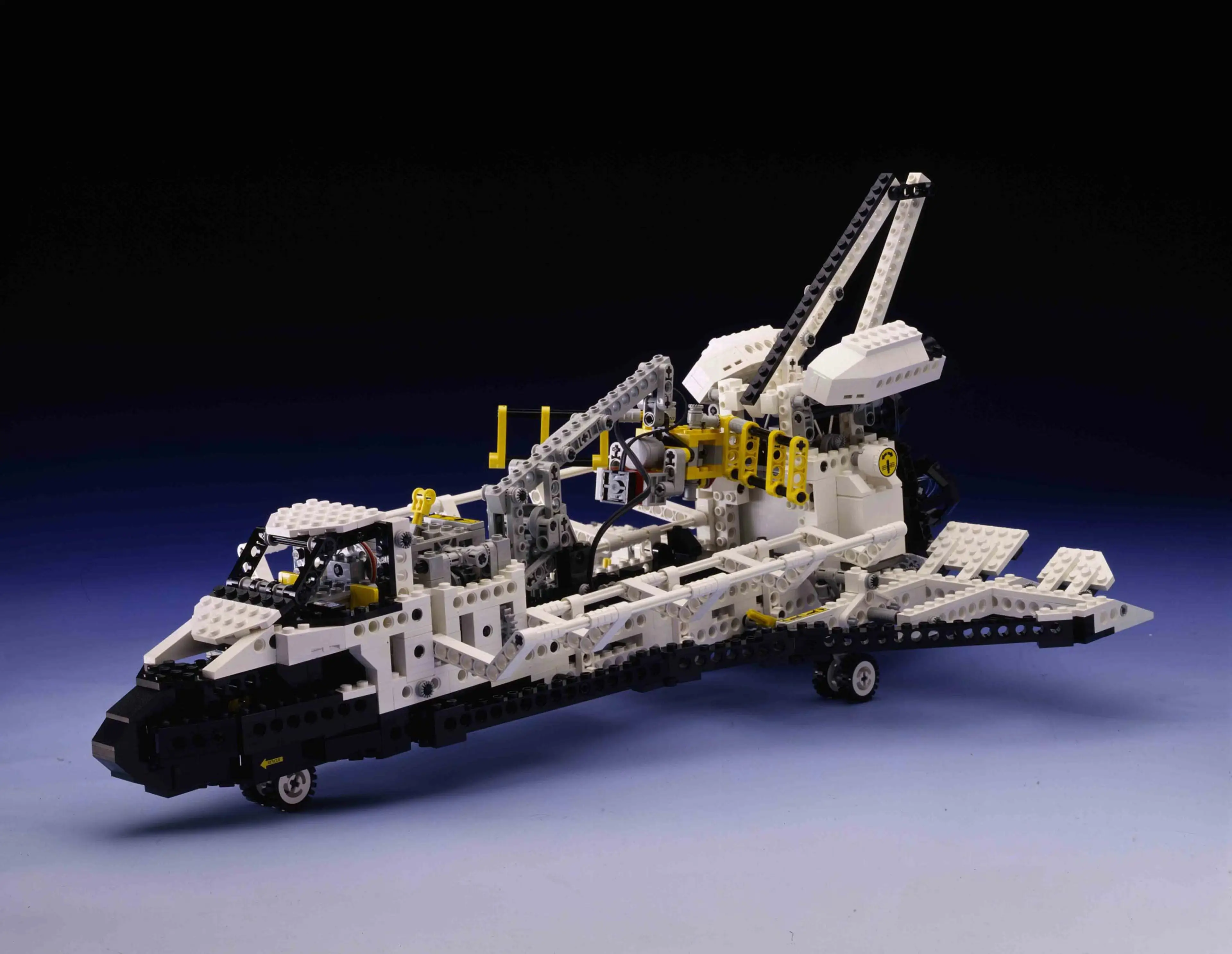
LEGO® Technic Space Shuttle, set no. 8480 from 1996
Alien invaders
In 2011 the LEGO Group releases a new theme, LEGO Alien Conquest, where aliens invade the Earth. This is the first time the LEGO Group features a theme with alien invaders. In 2013, the LEGO Group once again introduces a new theme, LEGO Galaxy Squad, which features a group of humans and robotic sidekicks who defend their galaxy from alien invaders resembling anthropomorphic insects.
Fascination of space prior to LEGO Space
In the 1960s space becomes a dramatic arena for the competition between the Soviet Union and the United States battling for supremacy in spaceflight capability. The Space Race fascinates people around the world, and the LEGO Group launches the first set with a space rocket in 1964. In the 1970s two sets are launched in the LEGOLAND range: set no. 358, Rocket Base, in 1973 and set no. 367, Moon Landing in 1975. The sets boast new parts and building techniques previously unseen to build smoother-looking space ships and multi-purpose vehicles.
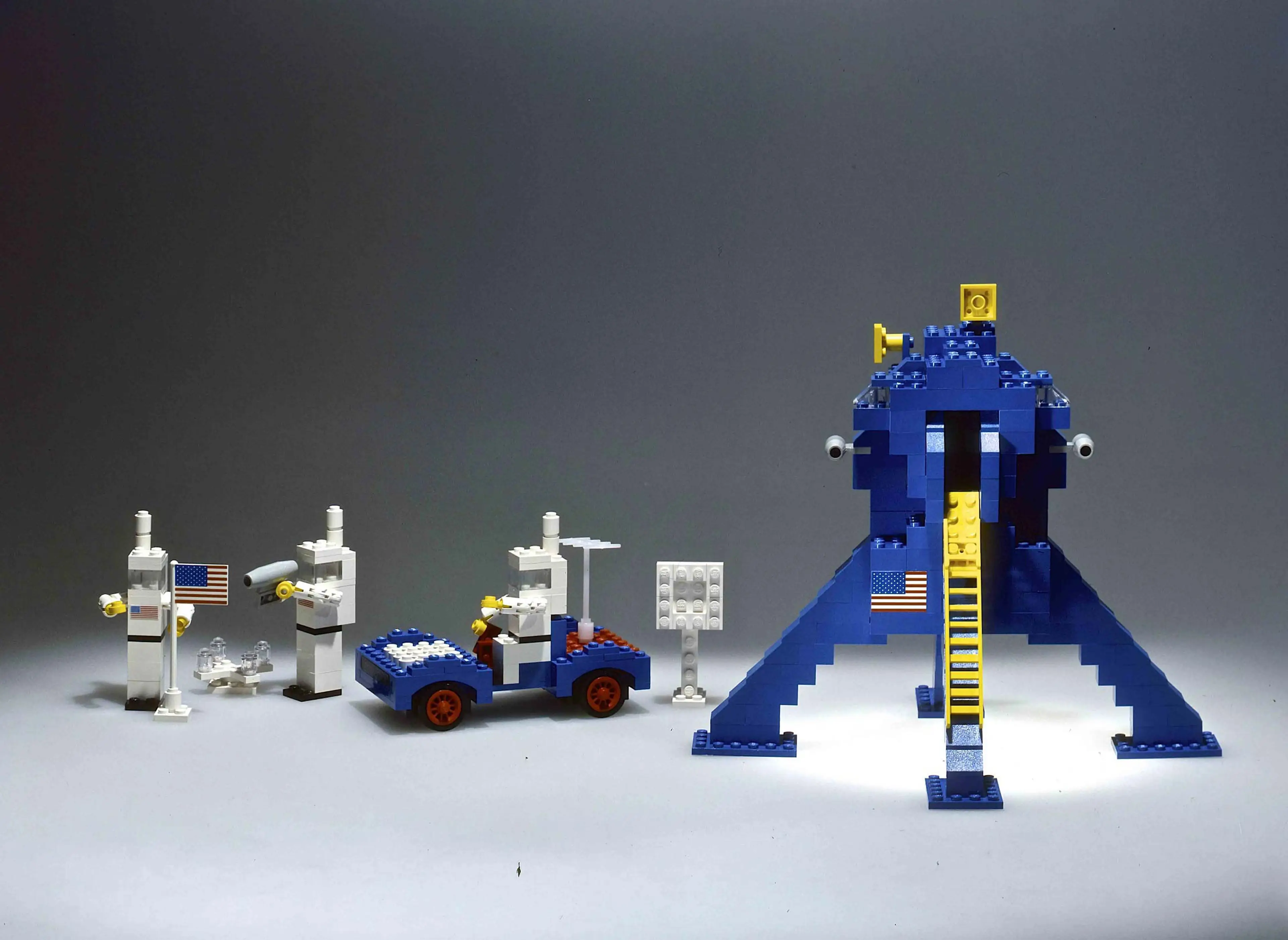
Set no. 367, Moon Landing, from 1975

